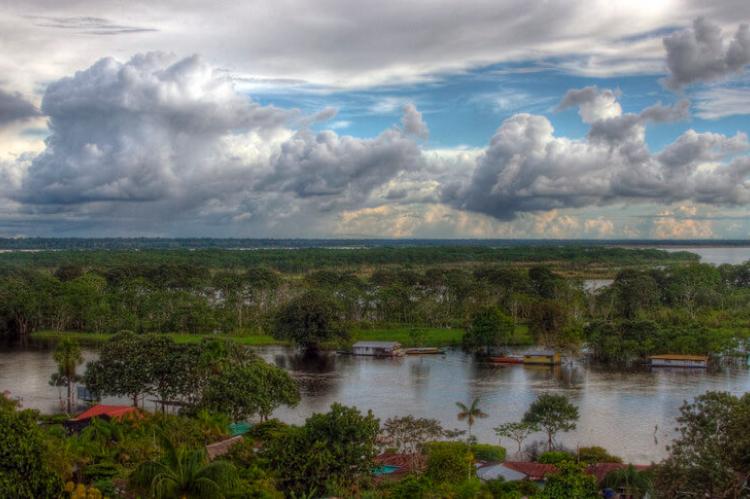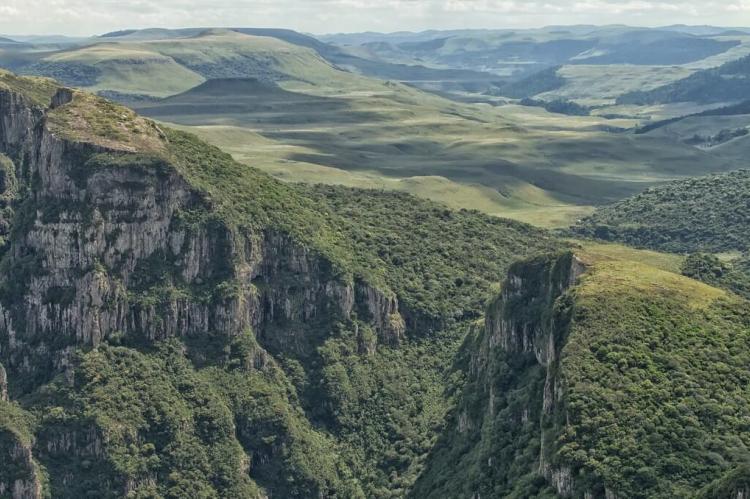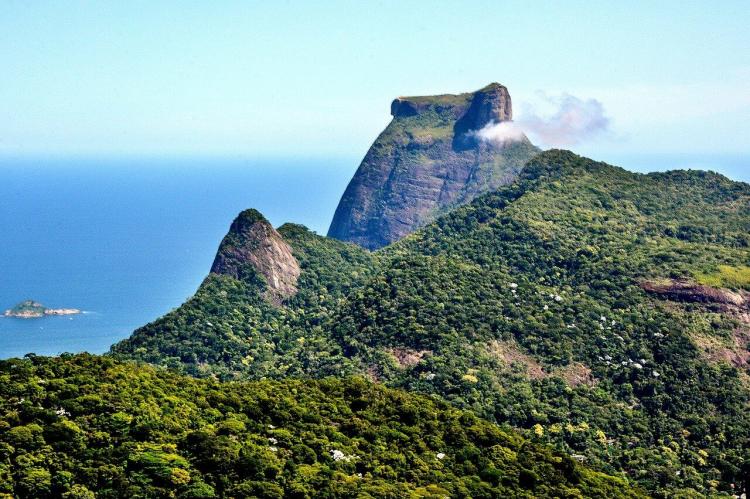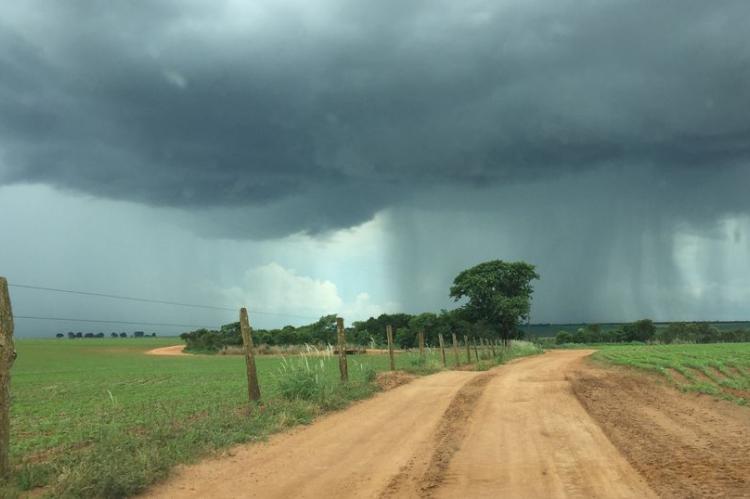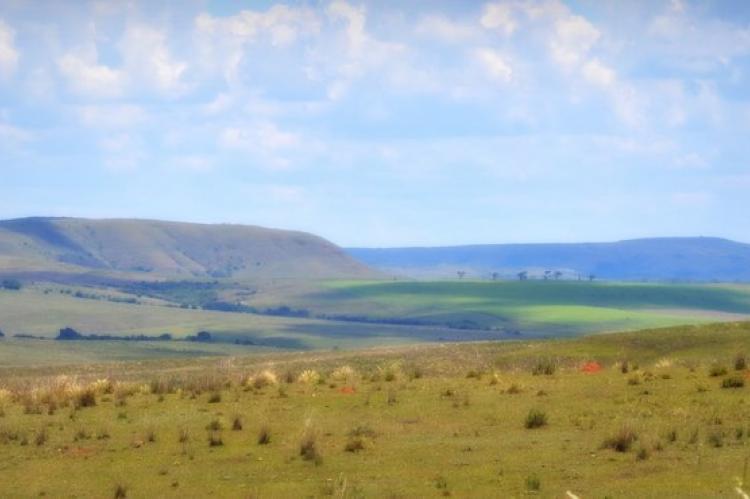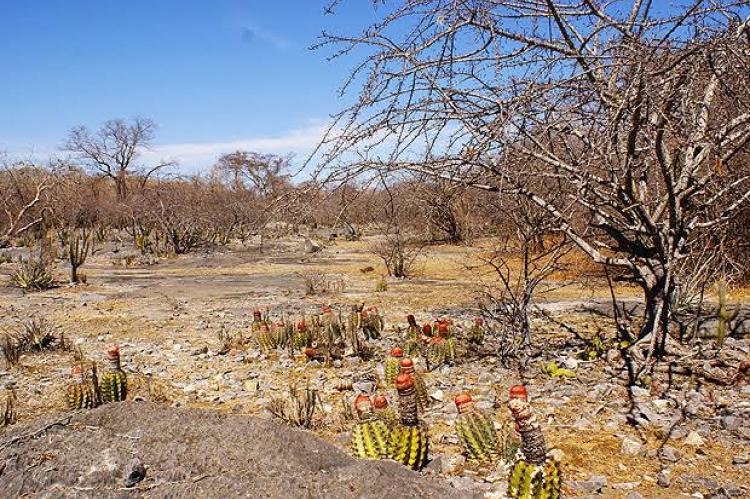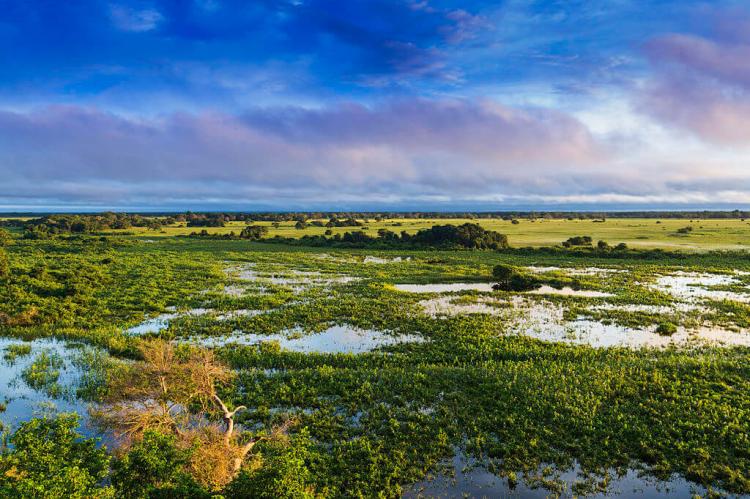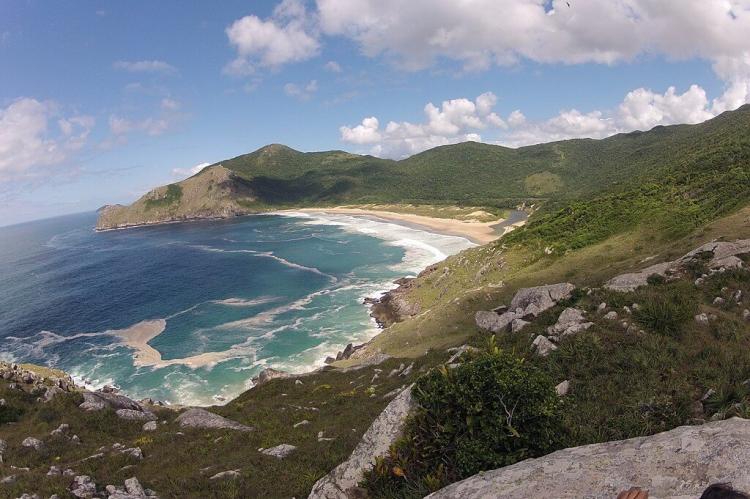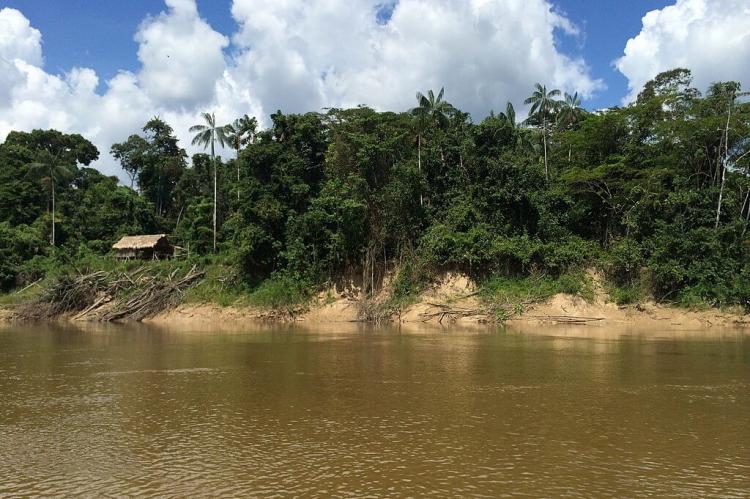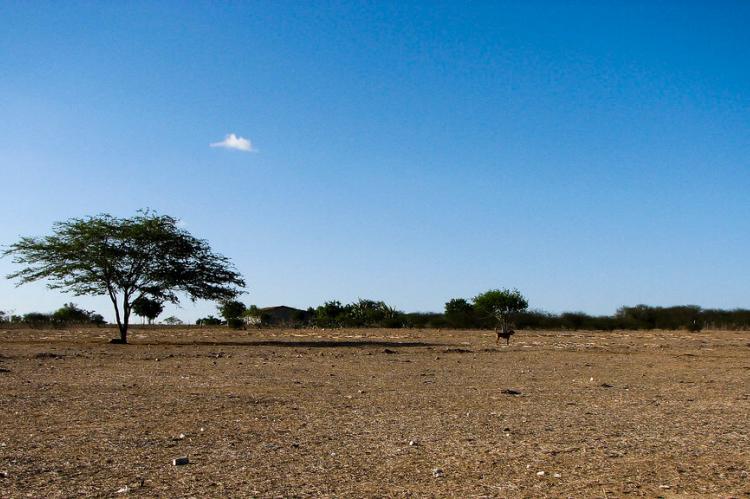Brazil: Natural Landscape
Brazil is South America's largest country, occupying half of its landmass. It is the fifth largest country in the world and is regarded as the most biodiverse country on Earth. The country is conventionally divided into five geographic regions corresponding to its significant landforms and biomes.
The Natural Landscape of Brazil
Situated in the eastern expanse of South America, Brazil is the largest country on the continent, commanding a staggering half of its landmass. This sprawling nation is the fifth-largest globally and ranks seventh most populous, highlighting its vast size and diverse population.
To the east, Brazil is bordered by the expansive Atlantic Ocean, tracing an approximately 7,491-kilometer (4,655-mile) coastline. Its land boundaries intertwine with various neighboring countries: French Guiana, Suriname, Guyana, and Venezuela in the north; Colombia in the northwest; Peru in the west; and Bolivia, Paraguay, and Argentina in the southwest. Uruguay marks the southern boundary.
Brazil's administrative divisions comprise 26 states and the Federal District, each playing a role in the country's dynamic tapestry. These regions are traditionally categorized into five geographic zones, aligning with Brazil's significant landforms and diverse biomes, reflecting the nation's ecological richness and geographical diversity.
Biodiversity
Regarded as the pinnacle of biodiversity globally, Brazil stands out as the most biodiverse country on Earth, boasting an unparalleled wealth of natural treasures within its expansive borders. This South American giant encompasses six terrestrial biomes or natural regions, each contributing to the extraordinary variety of life that flourishes within its boundaries.
The biological richness of Brazil is staggering, exemplified by an impressive catalog of species. The nation hosts an astonishing 1,816 bird species, 1,141 amphibian species, 4,738 fish species, 693 mammal species, 847 reptile species, and an awe-inspiring 34,387 vascular plant species. These staggering numbers solidify Brazil's status as one of the 17 megadiverse countries on the planet, a select group recognized for their unparalleled ecological abundance and significance.
Conservation
Conservation initiatives in Brazil hold global importance due to the country's extensive and diverse natural resources, encompassing iconic landscapes like the Amazon Rainforest, Pantanal wetlands, Atlantic Forest, and a myriad of unique species.
With Brazil hosting a substantial portion of the world's biodiversity, safeguarding these ecosystems becomes paramount. Despite the significance, conservation efforts in Brazil confront a spectrum of challenges and opportunities.
Ongoing deforestation, illegal activities within protected areas, land conflicts, and the imperative for enhanced enforcement of environmental regulations pose significant hurdles to conservation in Brazil. Economic pressures, coupled with agricultural expansion and infrastructure development, occasionally clash with the overarching goals of conservation.
Nevertheless, Brazil's dedicated conservation community, composed of government agencies, non-governmental organizations (NGOs), indigenous groups, and international partners, persistently collaborates to navigate these challenges. Together, they strive to protect Brazil's invaluable natural heritage, fostering a harmonious balance between sustainable development and preserving its unique ecosystems.
Climate
Brazil has a tropical climate with two distinct seasons: wet and dry. The wet season runs from December to April, and the dry season runs from May to November. However, there is regional variation in rainfall, with the Amazon Rainforest being the wettest region and the Northeast being the driest.
Brazil's climate is influenced by several factors, including its location in the tropics, proximity to the equator, and topography. The country is located between 5 degrees north and 33 degrees south of the equator, which means it receives much sunlight and heat. The country is also surrounded by water on three sides, which helps to keep the climate humid.
Brazil's topography also plays a role in its climate. The country is divided by a central mountain range, which creates a rain shadow effect on the western side of the country. This is why the west side of the country is generally drier than the eastern side.
The climate of Brazil can vary depending on the elevation. The lowlands are typically hotter and more humid than the highlands. The highlands also experience cooler temperatures and more fog.
Here is a more detailed description of the different climate regions of Brazil:
- Amazon Rainforest: The Amazon Rainforest is the wettest region of Brazil, with an average annual rainfall of over 2,500 mm (100 in). The rainforest has a warm and humid climate, with average temperatures ranging from 25 - 30 °C (77 - 86 °F).
- Northeast Brazil: The Northeast is the driest region of Brazil, with an average annual rainfall of less than 500 mm (20 in). The Northeast has a hot and dry climate, with average temperatures ranging from 25 - 35 °C (77 - 95 °F).
- Central Brazil: Central Brazil has a tropical savanna climate, with an average annual rainfall of 1,000 - 1,500 mm (40 - 60 in). The rainy season runs from December to April, and the dry season runs from May to November.
- Southeast Brazil: The Southeast has a humid subtropical climate, with an average annual rainfall of 1,500 - 2,000 mm (60 - 80 in). The rainy season in the Southeast runs from December to April, and the dry season runs from May to November.
- Southern Brazil: Southern Brazil has a temperate climate with four distinct seasons: spring, summer, fall, and winter. The summers are warm and humid, with average temperatures ranging from 20 - 25 °C (68 - 77 °F). The winters are mild and dry, with average temperatures ranging from 10 - 15 °C (50 - 59 °F).
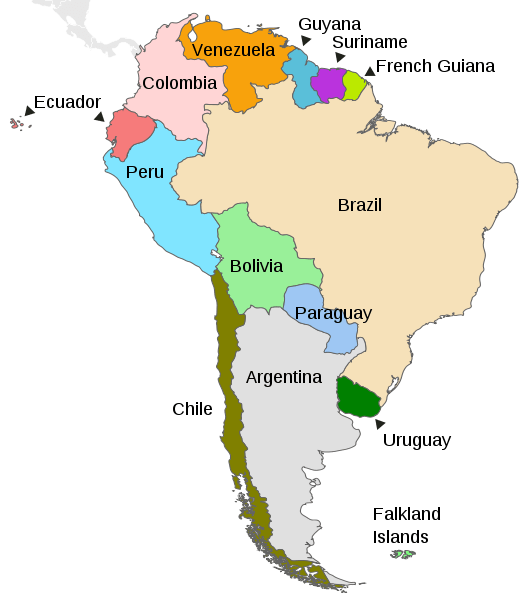
Map depicting the countries on the continent of South America
Natural Geography of Brazil
Major Landforms
Brazil's physical features can be grouped into five main physiographic divisions, each characterized by distinct geographical and environmental characteristics. These divisions contribute to the country's diverse landscapes and ecosystems. The five physiographic divisions of Brazil are:
- The Amazon Basin: Encompassing a significant portion of northern Brazil, the Amazon Basin is characterized by the vast Amazon Rainforest, the largest tropical rainforest in the world
- The Pantanal: Located in the western part of Brazil, the Pantanal is the world's largest tropical wetland area
- The Brazilian Highlands (or the Plateau): Covering a large portion of central and southeastern Brazil, the Brazilian Highlands consist of a vast plateau with rolling hills and escarpments
- The Atlantic Coastal Plain: Stretching along Brazil's eastern coast, the Atlantic Coastal Plain is a low-lying region featuring sandy beaches, lagoons, and coastal forests.
- The Guiana Highlands (or the Northern Highlands): Located in the northern part of Brazil, bordering other countries such as Venezuela and Guyana, the Guiana Highlands are characterized by ancient plateaus and tepuis (tabletop mountains)
These five physiographic divisions collectively contribute to Brazil's reputation as a country with remarkable environmental diversity, encompassing dense rainforests, expansive wetlands, high plateaus, coastal plains, and distinctive mountainous landscapes. This diversity not only influences the country's climate but also shapes the distribution of flora and fauna, making Brazil a global biodiversity hotspot.
Amazon Lowlands
The Amazon Lowlands, synonymous with the expansive Amazon Basin, constitute a vast and ecologically significant region renowned for its unparalleled biodiversity and unique geographical features. This lowland expanse sprawls predominantly across the northern part of South America and is notably characterized by its close correspondence to the Amazon River's drainage basin.
Beginning at the base of the Andes, these lowlands exhibit their greatest breadth, gradually tapering eastward. The region is marked by a distinctive geographic transition from the Andes' foothills to the Amazon Basin's vast plains. A striking feature of this landscape is the presence of annually flooded plains, known as "várzeas," which create a ribbon-like pattern as they extend eastward. These várzeas are a crucial component of the Amazon's hydrological cycle, experiencing seasonal inundation that sustains a dynamic and diverse ecosystem.
The Amazon Lowlands play a pivotal role in delineating the Brazilian Highlands' northern boundaries and the Guiana Highlands' southern periphery. This delineation is accentuated by the presence of undulating hills that gently rise and fall across the landscape, contributing to the overall topographical diversity of the region. While not as rugged as the Andes to the west, these hills impart a subtle relief to the Amazon Lowlands and influence the flow patterns of rivers and tributaries.
Pantanal
The Pantanal, located primarily in the western part of Brazil, is an expansive and unique landform renowned as the world's largest tropical wetland. Characterized by seasonal flooding, the Pantanal undergoes a dramatic transformation each year. During the wet season, typically from November to March, heavy rainfall and rising water levels from surrounding rivers cause the low-lying landscape to become an immense floodplain. This annual inundation is vital to the Pantanal's ecological vitality, creating a dynamic and ever-changing environment.
The Pantanal's topography consists of vast stretches of flat plains interspersed with patches of grasslands, forests, and water features. The region's low-lying terrain and seasonal flooding create a mosaic of habitats, fostering an incredible diversity of flora and fauna. The wetland supports a wealth of wildlife, including iconic species like jaguars and capybaras and an extensive array of bird species. The interplay between the wet and dry seasons defines the Pantanal's distinctive landform, making it a globally significant and visually captivating ecosystem that showcases the delicate harmony between water and land.
Brazilian Highlands
The Brazilian Highlands, also known as the Brazilian Plateau, constitute a vast and elevated landform that spans a significant portion of central and southeastern Brazil. This expansive plateau is characterized by undulating hills, rolling plains, and dissected plateaus, creating a diverse topographical landscape. Unlike the low-lying Pantanal, the Brazilian Highlands stand at higher elevations, creating a more rugged and varied terrain.
The Highlands are geographically significant, forming a natural divide between the Amazon Basin to the north and the Paraná-Paraguay River system to the south. This elevated region is home to various mountain ranges, including the Serra do Mar and Serra Geral, which run parallel to the Atlantic coast. These mountainous formations add a dramatic element to the Brazilian Highlands, creating stunning landscapes and influencing local climates.
Coastal (Atlantic) Lowlands
The Atlantic Coastal Lowlands, stretching along Brazil's eastern coast, form a distinct and geographically significant region characterized by low-lying plains and coastal features. This coastal lowland region extends from the northern state of Amapá to the southern state of Rio Grande do Sul, bordering the Atlantic Ocean. It encompasses diverse landscapes, including sandy beaches, lagoons, and mangrove swamps.
The topography of the Atlantic Coastal Lowlands is generally flat, creating extensive plains that gradually rise inland. This region is a natural transition between the Atlantic Ocean and the Brazilian Highlands to the west. The lowlands are often intersected by rivers that flow eastward towards the Atlantic, contributing to the formation of estuaries and creating fertile deltas.
Major cities, including Rio de Janeiro and São Paulo, are situated in the Atlantic Coastal Lowlands, highlighting the region's economic and cultural importance. The accessibility to the coast has historically facilitated maritime trade and contributed to the development of thriving urban centers.
The Atlantic Coastal Lowlands boasts a variety of ecosystems, including coastal forests and wetlands, providing habitats for diverse flora and fauna. This region plays a crucial role in terms of biodiversity and is a key area for conservation efforts. Additionally, the scenic landscapes and coastal cities make the Atlantic Coastal Lowlands a significant cultural and economic hub within Brazil.
Guiana Highlands
The Guiana Highlands, also known as the Brazilian Guiana Shield, is a vast and ancient plateau in northern Brazil, extending into Venezuela, Guyana, Suriname, and French Guiana. This elevated landform is characterized by rugged terrain, towering tabletop mountains known as tepuis, and dense tropical rainforests. The Guiana Highlands represent one of the oldest geological formations on Earth, with landscapes shaped over millions of years.
The topography of the Guiana Highlands features imposing tepuis flat-topped mountains with cliffs, creating a surreal and unique landscape. These mesas have become famous for their isolated ecosystems and have inspired various myths and legends. The region is also marked by deep river valleys, including the Orinoco and Amazon basins, which cut through the highlands, contributing to the overall diversity of the area.
The Guiana Highlands are rich in biodiversity, hosting many plant and animal species. The dense rainforests that cover the highlands are home to numerous endemic and unique organisms, making it a significant area for ecological research and conservation. While the Guiana Highlands are sparsely populated due to their challenging terrain, they hold cultural importance for indigenous communities adapting to life in this rugged environment.
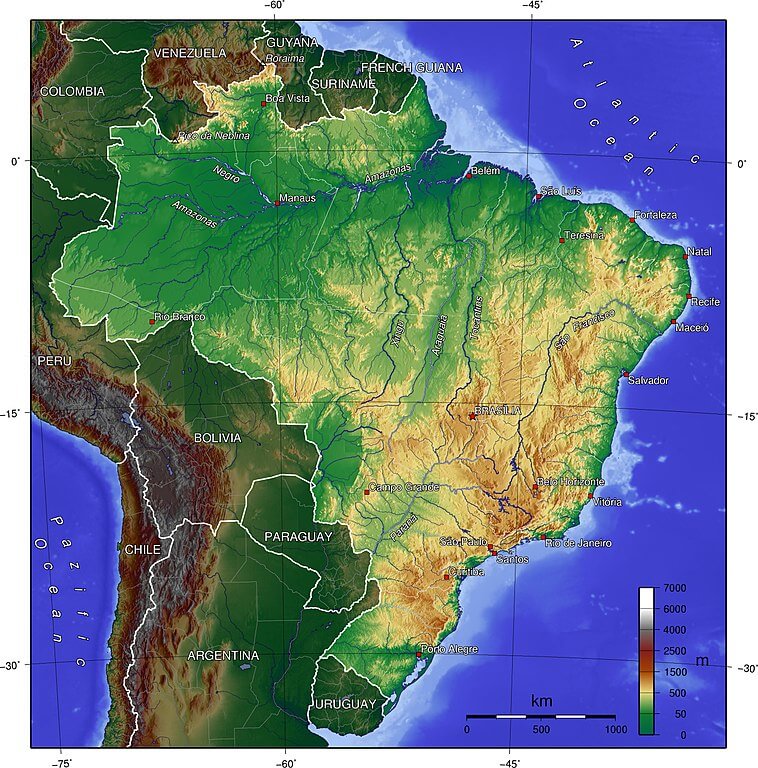
Topographical map of Brazil
Natural Regions / Biomes
Brazil's territory comprises six terrestrial biomes and one marine biome. Biomes are natural regions distinguished by geography, climate, and associated flora and fauna. These natural regions are classified according to their predominant vegetation.
Amazon (Amazônia)
The Amazon Biome contains the Amazon Rainforest, an area of tropical rainforest and other ecoregions that cover most of the Amazon Basin, along with some adjacent areas to the north and east.
As the most extensive forest formation on the planet, spanning 6.7 million sq km (2.6 million sq mi), the Amazon Biome is virtually unrivaled in scale and complexity. It contains blackwater and whitewater flooded forests, lowland and montane forests, bamboo and palm forests, savanna, sandy heath, and alpine tundra.
This biome is considered one of the most critical areas on Earth. It represents half of the world's rainforest and is home to one-third of Earth's species. It is also an essential global storehouse of carbon. For those reasons, the Brazilian Amazon is one of the most studied biomes in the world.
Atlantic Forest (Mata Atlântica)
The Atlantic Forest (Mata Atlântica) once stretched over much of Brazil's Atlantic coastline and covered parts of Paraguay, Uruguay, and Argentina. Today, it survives mainly in small degraded patches and protected areas.
This tropical forest is found in Brazil's coastal region; therefore, it is characterized by humid winds coming from the sea and steep reliefs. It comprises various ecosystems because of multiple altitudes, latitudes, and climates ranging from semideciduous seasonal forests to open mountain fields and Araucaria forests in the south.
Caatinga
The Caatinga is a semiarid biome and South America's largest dry forest region. The only biome that is exclusively Brazilian, it is one of the richest dry forests in the world. Consisting primarily of xeric shrubland and thorn forest, the biome covers the northeast portion of Brazil and occupies approximately 10% of the country's area.
Cerrado
The Cerrado is the largest savanna region in South America and the largest ecoregion in the Americas. Biologically, it is the richest savanna in the world. As the second-largest Brazilian biome, it encompasses approximately 22% of its land area. The Cerrado is dry and hot but far from lifeless, comprising a wide range of plant and animal biodiversity. It is described as the richest savanna in the world by the World Wildlife Fund.
Over the past 35 years, more than half of the biome's original area has been converted to agriculture, dramatically changing Brazilian land use.
Pampa
The Pampa (Las Pampas) is a vast, fertile lowland plain region. The biome represents just over 2% of Brazil's national territory. The biome lies within the South Temperate Zone and has subtropical and temperate climates with four well-characterized seasons. Grasslands, with sparse shrub and tree formations, are the dominant vegetation.
Pantanal
The Pantanal is a natural region encompassing the world's largest tropical wetland. This gigantic seasonal floodplain is also home to many plants and wildlife. Periods of inundation and desiccation alternate annually. Despite this, the area supports a rich agricultural and eco-tourism economy. It occupies just under 2% of Brazil's national territory.
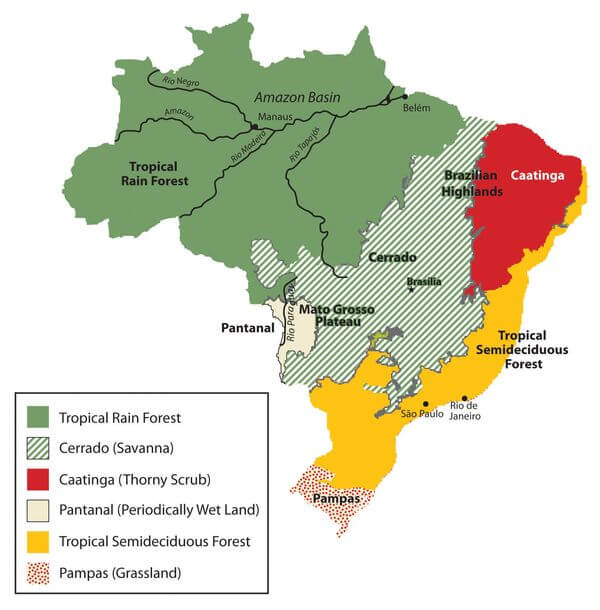
Map of Brazil's six main biomes
Mountain Ranges
Brazil is a vast country with diverse geography, but it is primarily known for its extensive lowland areas and the Amazon Rainforest. While Brazil does not have extensive mountain ranges like the Andes in South America, it does have some notable mountainous regions.
Brazil's mountains are predominantly found in the southeastern and southern regions of the country. These ranges include cliffs, dense rainforests, and high-altitude plateaus. The mountains contribute to the country's rich biodiversity, with many of them forming part of the Atlantic Forest, a critically important biome.
See more: Mountain Ranges of Brazil
Islands and Archipelagos
The islands and archipelagos of Brazil are diverse, ranging from the remote and uninhabited Saint Peter and Saint Paul Archipelago to the popular tourist destination of Fernando de Noronha. Brazil's islands offer an array of natural wonders and cultural treasures.
See more: Islands and Archipelagos of Brazil
Bodies of Water
Brazil has many water bodies that span its vast and diverse natural landscape. The country offers a remarkable range of aquatic environments, from mighty rivers and expansive wetlands to breathtaking waterfalls and stunning coastal areas.
See more: Water Bodies of Brazil
Administrative Divisions
Brazil comprises 26 states and one federal district. The states are subdivided into municipalities. In addition, the states are conventionally divided among five regions based on geographic location.
See more: Cultural Landscape of Brazil
Ecological Regions
The following is a list of terrestrial ecoregions in Brazil, as defined by the World Wide Fund for Nature (WWF). Brazil is in the Neotropical realm. Ecoregions are classified by biome type - the major global plant communities determined by rainfall and climate.
Tropical and subtropical moist broadleaf forests
- Alto Paraná Atlantic forests
- Araucaria moist forests
- Atlantic Coast restingas
- Bahia coastal forests
- Bahia interior forests
- Caatinga Enclaves moist forests
- Fernando de Noronha-Atol das Rocas moist forests
- Guayanan Highlands moist forests
- Guianan moist forests
- Guianan piedmont and lowland moist forests
- Gurupá várzea
- Iquitos várzea
- Japurá-Solimões-Negro moist forests
- Juruá-Purus moist forests
- Madeira-Tapajós moist forests
- Marajó várzea
- Maranhão Babaçu forests
- Mato Grosso tropical dry forests
- Monte Alegre várzea
- Negro-Branco moist forests
- Northeastern Brazil restingas
- Pantepui forests and shrublands
- Pernambuco coastal forests
- Pernambuco interior forests
- Purus várzea
- Purus-Madeira moist forests
- Serra do Mar coastal forests
- Solimões-Japurá moist forests
- Southwest Amazon moist forests
- Tapajós-Xingu moist forests
- Tocantins-Araguaia-Maranhão moist forests
- Trindade and Martim Vaz Islands tropical forest
- Uatuma-Trombetas moist forests
- Xingu-Tocantins-Araguaia moist forests
Tropical and subtropical dry broadleaf forests
- Atlantic dry forests
- Chiquitano dry forests
Tropical and subtropical grasslands, savannas, and shrublands
- Campos rupestres
- Cerrado
- Guianan savanna
- Humid Chaco
- Uruguayan savanna
Flooded grasslands and savannas
Deserts and xeric shrublands
- Caatinga
- Saint Peter and Saint Paul rocks
Mangroves
- Amapá mangroves
- Bahia mangroves
- Ilha Grande mangroves
- Pará mangroves
- Rio Piranhas mangroves
- Rio São Francisco mangroves
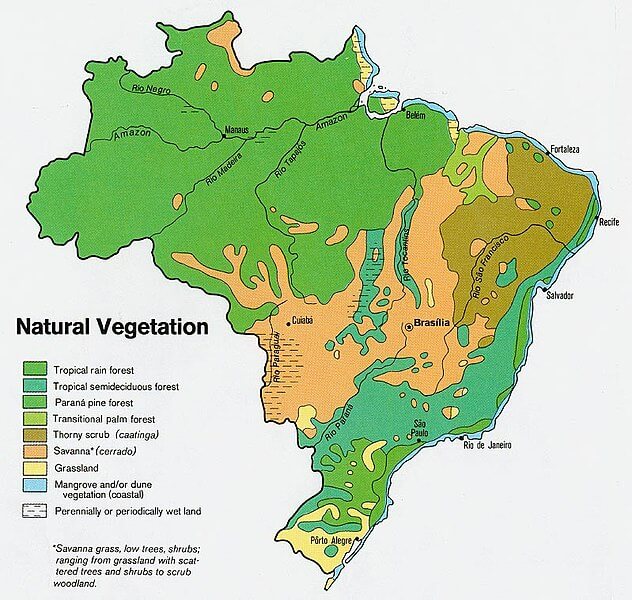
Terrestrial biomes distribution Map of Brazil
